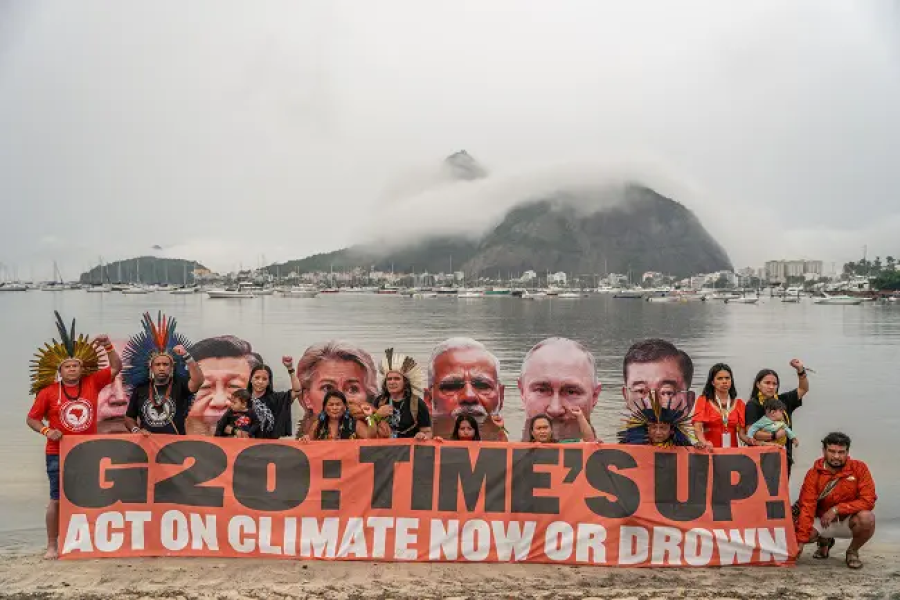The Mangrove Action Project is a response to the fate of the world's remaining mangrove forests and the people who depend on them. Rapid industrial development is destroying mangrove forests at an alarming rate worldwide. Especially damaging to these important coastal forests is the recent expansion of prawn aquaculture. The prawn industry has gown in both Asia and Latin America, earning immense quick profits for big-monied investors, while leaving invaluable mangrove forests, coastal ecosystems and indigenous cultures in utter ruin.
Mangrove forest, sometimes called the rain forests by the sea, are found in tropical and sub-tropical regions of the world. They are unique in both the plant and animal life they support, due to their specially adapted aerial roots and salt-filtering tap roots which enable them to thrive in brackish swamp lands. Mangrove environments provide sheltered nursery and spawning grounds for much of the world's commercial and sports fisheries. Vast quantities of forest detritus provide rich nutrients for sea life, while the mangroves protect shorelines from erosion and storm damage. The bracing roots of the mangroves thus protect sea grasses and coral reefs from otherwise devastating siltation.
Presently, the world's remaining mangrove forest cover over 52 million acres of coastline in three tropical areas. Asia contain nearly half of the world's total mangrove forests, the Americas around 35% and Africa around 20%. Indonesia has the largest area of mangrove forest in the world, with an estimated 12.2 million acres.
When mangrove forest are lost, much more than trees suffer. Besides the many endangered species which depend on the mangroves for survival- such as rare shore birds, sea turtles and the nearly extinct dugong - millions of coastal fisherpeople and farmers are also adversely affected.
The prawn industry often clears vast areas of mangrove forest and coastal farmland for the construction of large artificial ponds. Under what are termed "intensive production methods," huge quantities of prawns are raised within these shallow, brackish ponds. The ponds often activate the potential acid sulfate soils, causing pH imbalances in the pond water. Processed feed, chemical additives - believed necessary to maintain healthy prawns - and the prawn excrement itself pollute both fresh and salt water resources. In spite of a constant exchange of fresh sea water for fouled pond water, in only a few years prawn production slows because of insurmountable pond pollution. Finally the ponds are abandoned, leaving behind a legacy of barren pits and devastated eco-systems.
Besides the obvious degradation of coastal ecosystems, aquacultural production has other devastating consequences. Over-use of fresh water for the prawn ponds can cause shortages of drinking water, ruin of nearby crop lands, land subsidence, and salinization of ground water supplies. Mangrove forests offer a wealth of wood products, including charcoal, paper, building materials, firewood and rayon. However, the industry converts this once public multiple-use natural resource into a private single-purpose production unit. Also, the export of nearly 90% of aquacultural products deprives coastal peoples of their major source of protein.
The big business investors, undaunted by the inevitable decline in prawn production, simply reopen business elsewhere. Most of their vast profits are made in the first year of production. The largest forces in the industry also profit by selling prawn feed, additives and equipment to smaller prawn farmers.
But the smaller prawn farmers rarely profit. Too often, small farmers and fisherpeople are caught up in the rising heat of "prawn fever." They mortgage their homes and lands to enter the business of prawn aquaculture. When the ponds eventually fail because of mounting pollution and technical problems. Countless indigenous coastal people have in this way been displaced by the prawn industry. Many of those dispossessed of their livehoods and traditions have been forced to look for work in the cities, where the quality of life is often poor. Once self-sufficient peoples have become culturally and economically impoverished by the boom and bust prawn industry.
This scenario of destruction has visited the coasts of Taiwan, India, Bangladesh, the Philippines, Thailand, Indonesia, Malaysia, Ecuador, Panama, Mexico and other countries. And now the prawn industry is establishing footholds in Viet Nam, Cambodia, Burma, Iran, Yemen and other parts of Asia, Latin America and Africa.
Each year total prawn production increases. In 1992m nearly 700,000 metric tons of prawns were aquaculturally produced worldwide-about 80% in the Eastern Hemisphere and about 20% in the Western Hemisphere. The industry is currently projecting in 1993 an 80% increase in prawn exports to the U.S. alone, as well as similar increases the U.S, are the world's top two importers of prawn products.) The industry plans to keep prices relatively low and product quality high to increase worldwide demand for their product.
The Mangrove Action Project (MAP), a growing international coalition consisting of environmental, human rights and community-base groups, includes organizations based both in Third World countries, where coastal areas are threatened, and the industrialized nations, where the prawns are mainly consumed.
Article copyright Cultural Survival, Inc.



